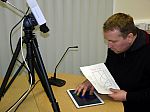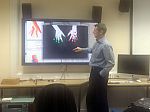In this research project, we examine the cognitive processes involved in the perception of tactile graphics and develop new designs to improve their utility and effectiveness.
We are devising novel experimental techniques to record and interpret readers’ strategies as they interact with tactile diagrams. We will use that knowledge, alongside our previous work on the design of diagrams for challenging educational topics, to create tactile graphics that better support comprehension, reasoning and learning.
If you are blind or visually impaired and would like to contribute to this project, please don't hesitate to get in touch with us by writing an e-mail to tactilegraphics@sussex.ac.uk.
If you would like to contact any member of our team individually, find their details below:
- Prof Peter Cheng (Web profile, E-mail)
- Dr Frances Aldrich (Web profile, E-mail)
- Dr Ronald Grau (Web profile, E-mail)
- Dr Grecia Garcia-Garcia (Web profile, E-mail)





